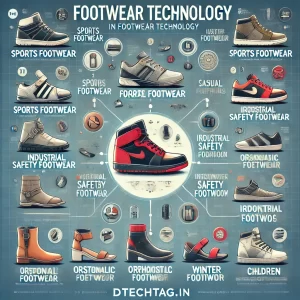
Elon Musk Vision for a City on Mars 2054
Why Mars?
Mars has always intrigued scientists and space enthusiasts as the most viable location for human colonization. Elon Musk Vision for a City on Mars 2054. Unlike other planets, it has a stable day-night cycle, abundant resources, and similar land area to Earth’s landmass, making it a logical choice for Musk’s city. But why aim for a city of one million? According to Musk, reaching this population size is critical for Mars to develop a self-sustaining economy, build local industries, and ultimately thrive without continuous supplies from Earth.
The Roadmap to Mars: SpaceX’s Starship Program
A massive milestone on this journey is SpaceX’s Starship – a fully reusable spacecraft designed to transport up to 100 passengers to Mars at a time. Elon Musk Vision for a City on Mars 2054. Starship’s development marks a huge leap toward affordable and regular interplanetary travel. SpaceX aims to launch the first crewed mission to Mars within this decade, with hopes of establishing early outposts by the 2030s. These initial missions will lay the groundwork for the infrastructure needed to build a Martian city.
Overcoming the Challenges of Martian Life
Building a city on Mars by 2054 requires solving numerous challenges, including:
1. Creating a Livable Environment: Mars has an unbreathable atmosphere and extreme temperatures. Solutions like protective domes and pressurized habitats will be crucial. Elon Musk Vision for a City on Mars 2054.
2. Establishing Sustainable Food and Water Supply: A colony of one million will need sustainable food sources, likely through advanced hydroponics or lab-grown food. Water extraction from ice deposits will be essential for both drinking and agriculture. Elon Musk Vision for a City on Mars 2054.
3. Energy and Power: Solar energy will be the primary power source on Mars. Tesla’s solar technology and battery storage systems could play a major role here, along with potential nuclear reactors for uninterrupted power. Elon Musk Vision for a City on Mars 2054.
4. Transportation and Communication: With a significant time delay in communication between Earth and Mars, establishing efficient inter-colony communication systems will be vital. Elon Musk Vision for a City on Mars 2054. Additionally, developing robust transportation for local travel within the Martian city will be a key factor for successful settlement.
5. Health and Safety: Adapting to low gravity and radiation protection are among the critical health challenges. Musk’s team is exploring new technologies for shielding inhabitants from cosmic rays and ensuring long-term health on the Red Planet. Elon Musk Vision for a City on Mars 2054.
Economic Viability: Building an Independent Martian Economy
One of the most challenging aspects of Elon Musk Vision for a City on Mars 2054 is building a self-sufficient economy. Mining resources like iron, aluminum, and possibly rare minerals will be essential for construction and technological development. Elon Musk Vision for a City on Mars 2054. Additionally, Mars will need industries like manufacturing, food production, and recycling to support its population. Musk envisions that once these industries are operational, they can create a sustainable economic loop, making Mars a thriving colony independent of Earth’s resources.
The Bigger Picture: Transforming Humanity’s Future
Elon Musk’s vision of a Martian city isn’t just about technological milestones or space travel – it’s about securing the future of humanity. By establishing a settlement on Mars, Musk hopes to provide an insurance policy against existential risks to Earth, such as natural disasters or potential global conflicts. Elon Musk Vision for a City on Mars 2054. A city on Mars could be humanity’s first step toward becoming a multi-planetary species, opening the door to exploring and potentially colonizing other celestial bodies.
Elon Musk’s Futuristic Robot Vision
Timeline and Goals
While Musk’s target of 2054 may seem far off, the work has already begun. With SpaceX conducting regular tests of Starship and advancing Mars mission planning, the foundation for this audacious goal is being set today. Elon Musk Vision for a City on Mars 2054. If successful, SpaceX’s Mars city could redefine the boundaries of human achievement and reshape our place in the universe.
FAQs: Elon Musk’s Vision for a City on Mars
Q1: Why does Elon Musk want to build a city on Mars?
A1: Elon Musk envisions making humanity a multi-planetary species to secure its future. By building a city on Mars, Musk hopes to provide a safe haven in case Earth faces existential risks like natural disasters, global conflicts, or other catastrophic events.
Q2: Why did Musk choose Mars and not another planet?
A2: Mars is the most viable option for colonization due to its stable day-night cycle, landmass similar to Earth’s, and the presence of resources like ice that can provide water. Other planets are either too hostile or lack the necessary conditions for sustained human life.
Q3: How many people does Musk plan to settle on Mars, and by when?
A3: Musk aims to build a city of 1 million people on Mars by the year 2054. He believes this population size is necessary for creating a self-sustaining economy and society on the Red Planet.
Q4: What is the role of SpaceX’s Starship in this mission?
A4: Starship, SpaceX’s fully reusable spacecraft, is designed to transport people and cargo to Mars. It will be central to Musk’s vision, enabling regular and affordable interplanetary travel, which is crucial for establishing the initial Martian outposts.
Q5: What are the main challenges of building a city on Mars?
A5: Major challenges include creating a livable environment, securing sustainable food and water sources, generating energy, establishing transportation, and ensuring health and safety in Mars’ harsh conditions, like low gravity and high radiation.
Q6: How will the Mars city sustain itself economically?
A6: Musk envisions building local industries for mining, manufacturing, food production, and recycling on Mars. These industries could help Mars develop a self-sustaining economy, eventually reducing reliance on Earth’s resources.
Q7: How close is SpaceX to achieving this goal?
A7: SpaceX is making significant progress, particularly with Starship development. While Mars colonization is still in the early stages, Musk’s plans include launching the first crewed missions within this decade and beginning settlement efforts in the 2030s.
Q8: How does this Mars mission impact humanity’s future?
A8: This mission could be a transformative step for humanity, providing an alternative location for civilization and inspiring new advancements in science, technology, and space exploration. A Martian city might mark the beginning of humanity’s expansion beyond Earth.
पूरी जानकारी हिंदी में यहाँ से पढ़ें।
Conclusion
Elon Musk’s vision of building a Martian city of one million people by 2054 is a bold goal that will challenge every aspect of our scientific, engineering, and economic knowledge. Elon Musk Vision for a City on Mars 2054. While there are significant obstacles to overcome, Musk’s dedication and SpaceX’s innovations make this vision seem possible. The journey to Mars may be the most ambitious undertaking in human history, but it could also be our greatest achievement.




